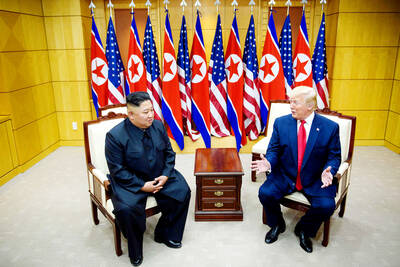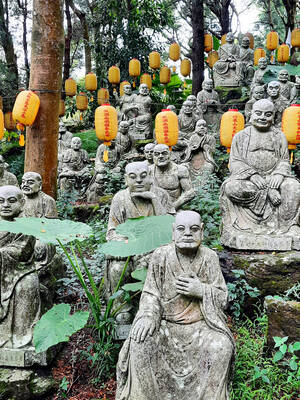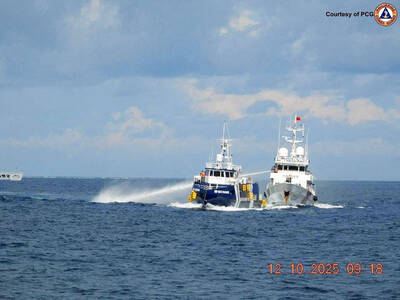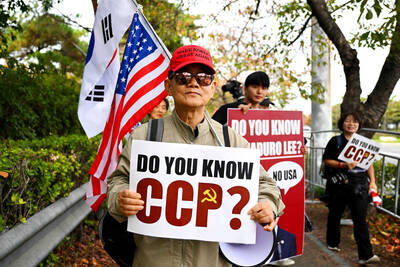Back in the day when reasonably priced Western restaurants were few and far between, Grandma Nitti’s was already providing comfort food for forlorn Westerners who had had enough of beef noodle soup and potstickers. Nitti’s location off Shida Road has become a well-known gathering place, and while the food on offer has drawn reviews ranging from the wildly enthusiastic to the derisive, the restaurant’s appeal has never faded for expats longing for a taste of home.
My Sweetie Pie Bakery & Cafe, located almost directly opposite, looks like it might have been transplanted from Taipei’s up-market East District (東區), but is in fact an extension of the Grandma Nitti operation. Clean lines, whitewashed walls and abundant natural light generate an air of casual sophistication.
My Sweetie shares some elements of Grandma Nitti’s menu, but according to Rainbow Lin (林虹惠), the driving force behind both operations, her new project is restricted to smaller brunch and snack dishes. The reason for this is to highlight the cake selection, which is displayed in a way that seems to wink alluringly at passersby.
Priced at around NT$90 a slice, the large portions of American-style cakes fill a niche in a market dominated by elaborately decorated production-line sweets or chichi concoctions of French or Japanese-inspired patisseries. Offerings such as carrot cake (NT$90) and warm chocolate cake (NT$80) make an appealing pairing with a large mug of coffee (hot NT$100; iced NT$110), and the banana chocolate cake (NT$90) is recommended for its robust textures and fresh banana flavor. This is comfort food, but there is an admirable restraint in the use of sugar and fat, and the cakes are nicely presented without being drowned in whipped cream.
For more savory palates, there are a number of brunch variations on offer, such as poached eggs with pesto sauce, ham and toast (NT$180), or light lunch meals that include homemade beef lasagna (with homemade pasta, NT$270). The prices include regular coffee or tea. A slice of cake or pie can be added to all orders for an additional NT$60, making for a very reasonably priced meal.
Apart from the restaurant service, My Sweetie Pie also sells cakes to order. Four-inch (10cm), 6-inch (15cm) and 8-inch (20cm) sizes are available, with prices for an 8-inch cake around NT$800.
The usual range of coffees, slushies, smoothies and milk shakes are available. My Sweetie serves also Mighty Leaf specialty teas as an added attraction.
The large airy space, open kitchen with gleaming surfaces, comfortable sofas and side tables with individual table lamps make this a location equally suited to work or relaxation. The friendly service and free Wi-Fi are icing on the cake.
— IAN BARTHOLOMEW

US President Donald Trump may have hoped for an impromptu talk with his old friend Kim Jong-un during a recent trip to Asia, but analysts say the increasingly emboldened North Korean despot had few good reasons to join the photo-op. Trump sent repeated overtures to Kim during his barnstorming tour of Asia, saying he was “100 percent” open to a meeting and even bucking decades of US policy by conceding that North Korea was “sort of a nuclear power.” But Pyongyang kept mum on the invitation, instead firing off missiles and sending its foreign minister to Russia and Belarus, with whom it

When Taiwan was battered by storms this summer, the only crumb of comfort I could take was knowing that some advice I’d drafted several weeks earlier had been correct. Regarding the Southern Cross-Island Highway (南橫公路), a spectacular high-elevation route connecting Taiwan’s southwest with the country’s southeast, I’d written: “The precarious existence of this road cannot be overstated; those hoping to drive or ride all the way across should have a backup plan.” As this article was going to press, the middle section of the highway, between Meishankou (梅山口) in Kaohsiung and Siangyang (向陽) in Taitung County, was still closed to outsiders

Many people noticed the flood of pro-China propaganda across a number of venues in recent weeks that looks like a coordinated assault on US Taiwan policy. It does look like an effort intended to influence the US before the meeting between US President Donald Trump and Chinese dictator Xi Jinping (習近平) over the weekend. Jennifer Kavanagh’s piece in the New York Times in September appears to be the opening strike of the current campaign. She followed up last week in the Lowy Interpreter, blaming the US for causing the PRC to escalate in the Philippines and Taiwan, saying that as

The Chinese Communist Party (CCP) has a dystopian, radical and dangerous conception of itself. Few are aware of this very fundamental difference between how they view power and how the rest of the world does. Even those of us who have lived in China sometimes fall back into the trap of viewing it through the lens of the power relationships common throughout the rest of the world, instead of understanding the CCP as it conceives of itself. Broadly speaking, the concepts of the people, race, culture, civilization, nation, government and religion are separate, though often overlapping and intertwined. A government